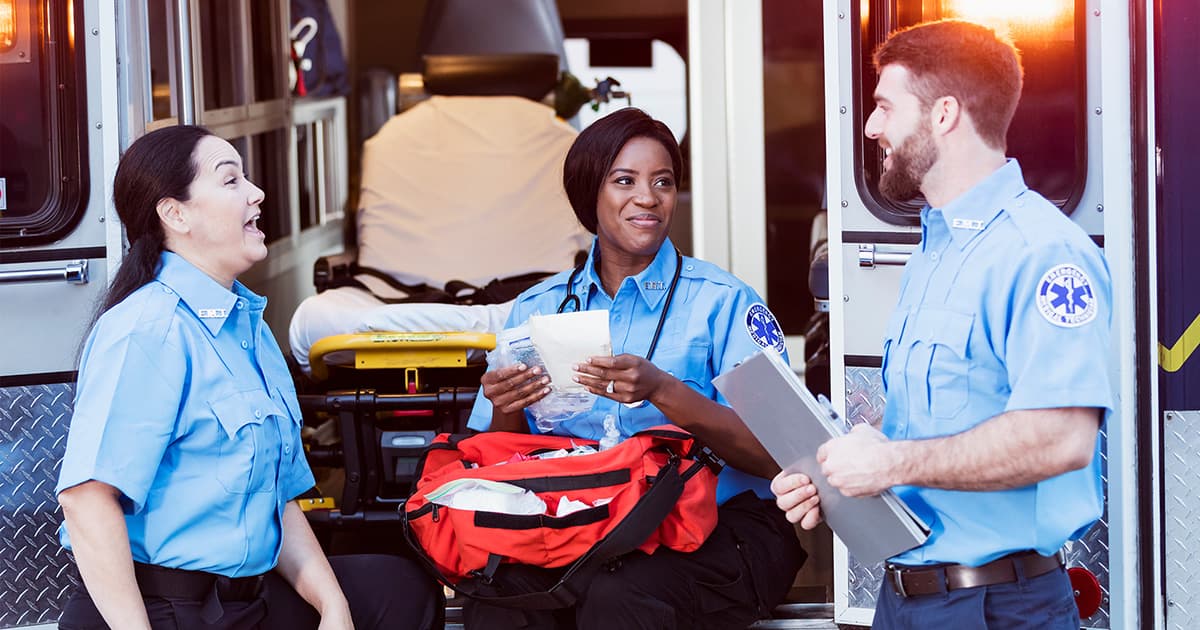Does Your Team Feel Unseen? Close the Leadership Disconnect with 2-Way Communication
Editor's Note: In July 2025, EMS1 and Fitch & Associates released their annual EMS trend survey, What Paramedics Want, proudly sponsored by Pulsara....

Montgomery County Hospital District (MCHD) EMS is just one of thousands of operations across the country working tirelessly to find the best solution to the issue coined the "pre-puncture problem." As alluded to by its name, this problem concerns determining the most effective course of action for getting large vessel occlusive (LVO) stroke patients to the best possible treatment center in the very limited time frame afforded to them.
 Photo courtesy of Mongomery Country Hospital District EMS Photo courtesy of Mongomery Country Hospital District EMS |
MCHD personnel have recently chronicled their experiences and insights from managing this issue in an article published on EMS1 last week, titled "LVO stroke: How to improve EMS response and patient survival."
Pre-hospital care is crucial in determining stroke patient outcome, and as such, many institutions like MCHD have adopted various tools to determine the severity of a stroke when faced with a patient displaying symptoms consistent with the condition. These tools ultimately help EMS teams decide whether to take their patient to a primary stroke center or to a comprehensive stroke center, even if the latter is further away.MCHD uses the following criteria to first determine whether a patient is having a stroke, and if so, what the severity of their stroke is:
Stroke identification - Signs and symptoms
To determine the presence of a stroke, pre-hospital providers look for one or more signs of a stroke:
Stroke severity
If a patient has one or more stroke signs, a stable airway and blood glucose level of greater than 60 mg/dl, the stroke severity is assessed to decide if a patient should be transported to the closest designated primary stroke center or to a comprehensive stroke center.
A) Patient has one or more of the following:
1) GCS less than 9.
2) Asymmetric pupils.
3) Sudden severe headache w/no known cause.
4) Severe one-sided weakness or RACE ≥ 5.
AND
B) Diversion to comprehensive stroke center would NOT extend transport time by more than 15 minutes.
Citing just how crucial EMS is in the ultimate outcomes of stroke patients, the article states that "EMS is involved in approximately three-quarters of strokes treated in the U.S. and is associated with decreased onset-to-treatment times and improved clinical outcomes." The authors also emphasize the need for a reliable system in which EMS can notify the receiving hospital of their patient's status in order to allow that facility to activate a stroke response as early as possible. This early activation helps to reduce overall case times, ultimately leading to better patient outcomes.
Pulsara's Stop Stroke platform is one such system that can help care teams decrease the time to treatment and ameliorate the pre-puncture problem. Studies using Pulsara have shown improvement in door-to-needle times of 28 to 46 percent, and 1.5 to 3.7 times improvement in the percentage of patients receiving therapy within the recommended 60 minutes or less [1-4].
See cases studies, demo videos and more about how Pulsara works right here.
---
References

Editor's Note: In July 2025, EMS1 and Fitch & Associates released their annual EMS trend survey, What Paramedics Want, proudly sponsored by Pulsara....
![[PRESS RELEASE] Published Research Finds Up to 31% Faster STEMI Treatment Times in Rural Hospital Setting with Pulsara](https://www.pulsara.com/hubfs/_1_website-page-blog-assets/pulsara-hosp-teams-assign-cardio-stemi-rn-1200x701.jpg)
Published research shows how using Pulsara, alongside standardized field activation and a focus on stakeholder relationships, improves STEMI care and...

Editor's Note: In July 2025, EMS1 and Fitch & Associates released their annual EMS trend survey, What Paramedics Want, proudly sponsored by Pulsara....